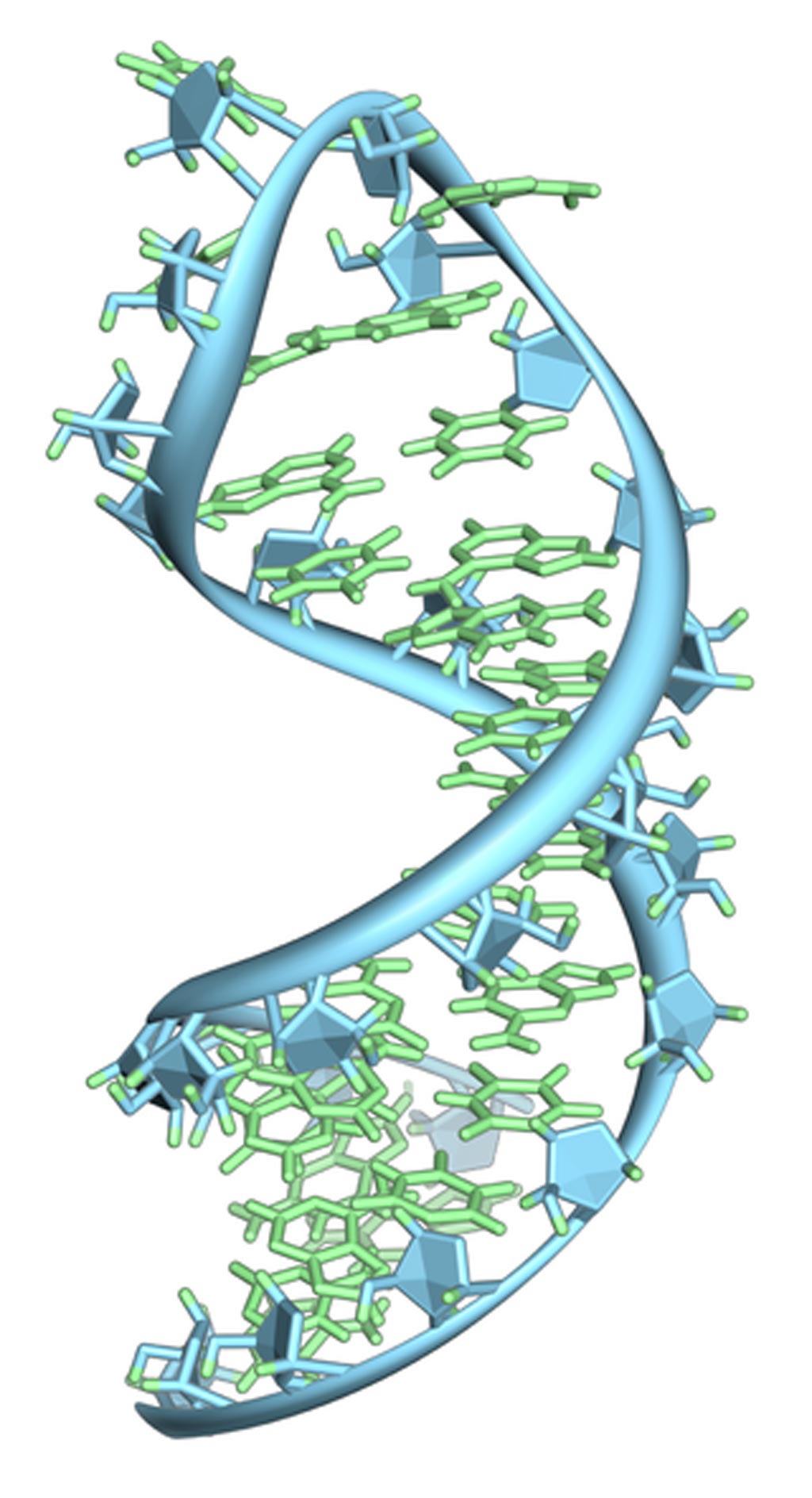Identifying Potential Drugs that Modify RNA Expression
By LabMedica International staff writers
Posted on 12 Jul 2018
A team of drug developers has described a small molecule microarray-based approach that allows for unmodified low molecular weight compounds, including [U.S.] Food and Drug Administration-approved drugs, to be probed for binding to RNA motif libraries in a massively parallel format.Posted on 12 Jul 2018
Potential RNA drug targets for small molecules are found throughout the human transcriptome, yet small molecules known to elicit a pharmacological response by directly targeting RNA have been limited to antibacterials. To expand the potential of small molecular weight drugs for cancer therapeutics, investigators at the Scripps Research Institute (Jupiter, FL, USA) devised "AbsorbArray", a system for rapidly testing a large library of existing drugs against a wide variety of RNA molecules.

Image: A hairpin loop from a pre-mRNA. Highlighted are the nucleobases (green) and the ribose-phosphate backbone (blue). This is a single strand of RNA that folds back upon itself (Photo courtesy of Wikimedia Commons).
The investigators reported in the June 28, 2018, online edition of the journal Cell Chemical Biology that this system revealed that several drug classes - including kinase and topoisomerase inhibitors - bound RNA. The latter avidly bound the motif found in the Dicer site of oncogenic microRNA (miR)-21 and inhibited the processing of this molecule both in vitro and in cells.
The most potent compound was shown to reverse the repression of a downstream protein target and inhibit a miR-21-mediated invasive phenotype. The compound's activity was canceled by overexpression of pre-miR-21. Target validation via chemical crosslinking and isolation by pull-down showed direct engagement of pre-miR-21 by the small molecule in cells demonstrated that RNAs should indeed be considered druggable.
"Known drugs made in the era when RNAs were not considered drug targets are, in fact, binding RNA, and causing some of the drug's effects by modulating targets that were not previously considered," said senior author Dr. Matthew D. Disney, professor of chemistry at the Scripps Research Institute. "We found broad drug classes that bind RNA. There is reason to believe that not only could known drugs bind RNA in a disease setting, but there is more evidence that one should consider RNA as a target in drug-discovery efforts."
"Drugs that patients take every day apparently target RNA, which is only recently being thought of as a target for small molecule medicines," said Dr. Disney. "As new RNAs are found to cause disease, routine medicines may be identified to target them. This would change the perception of RNAs as an afterthought in drug discovery and bring them to the forefront."
Related Links:
Scripps Research Institute













